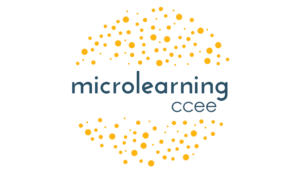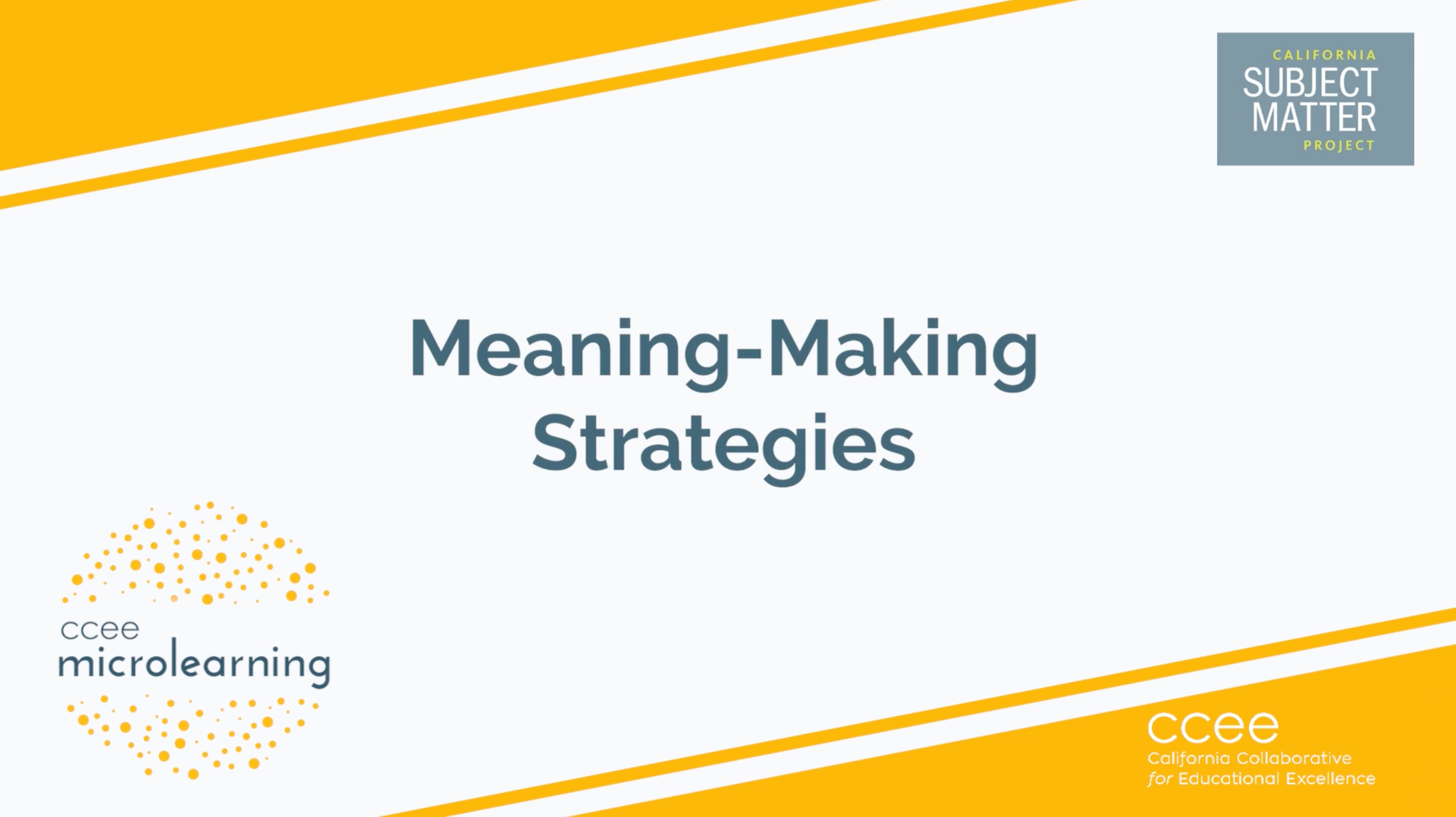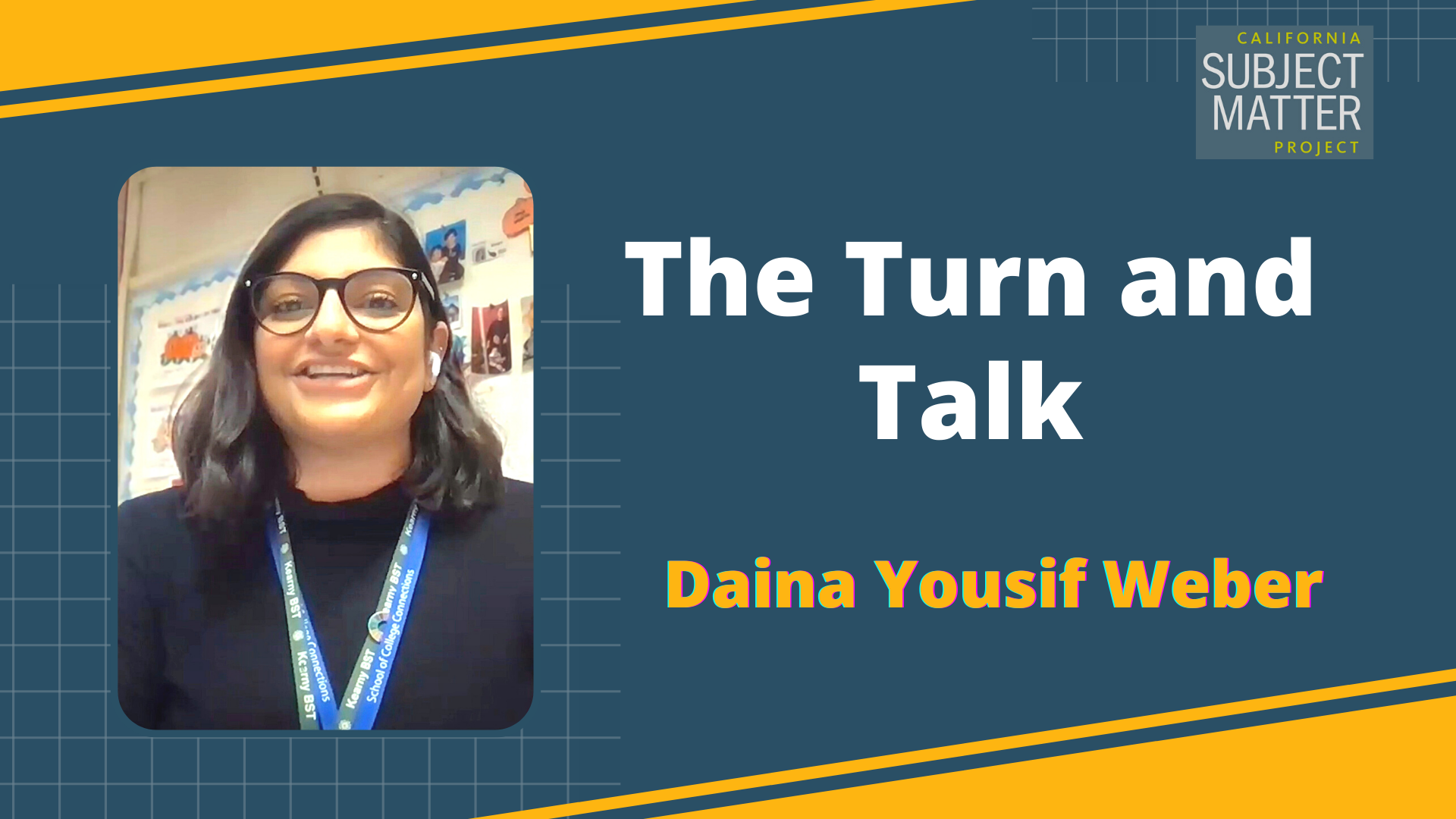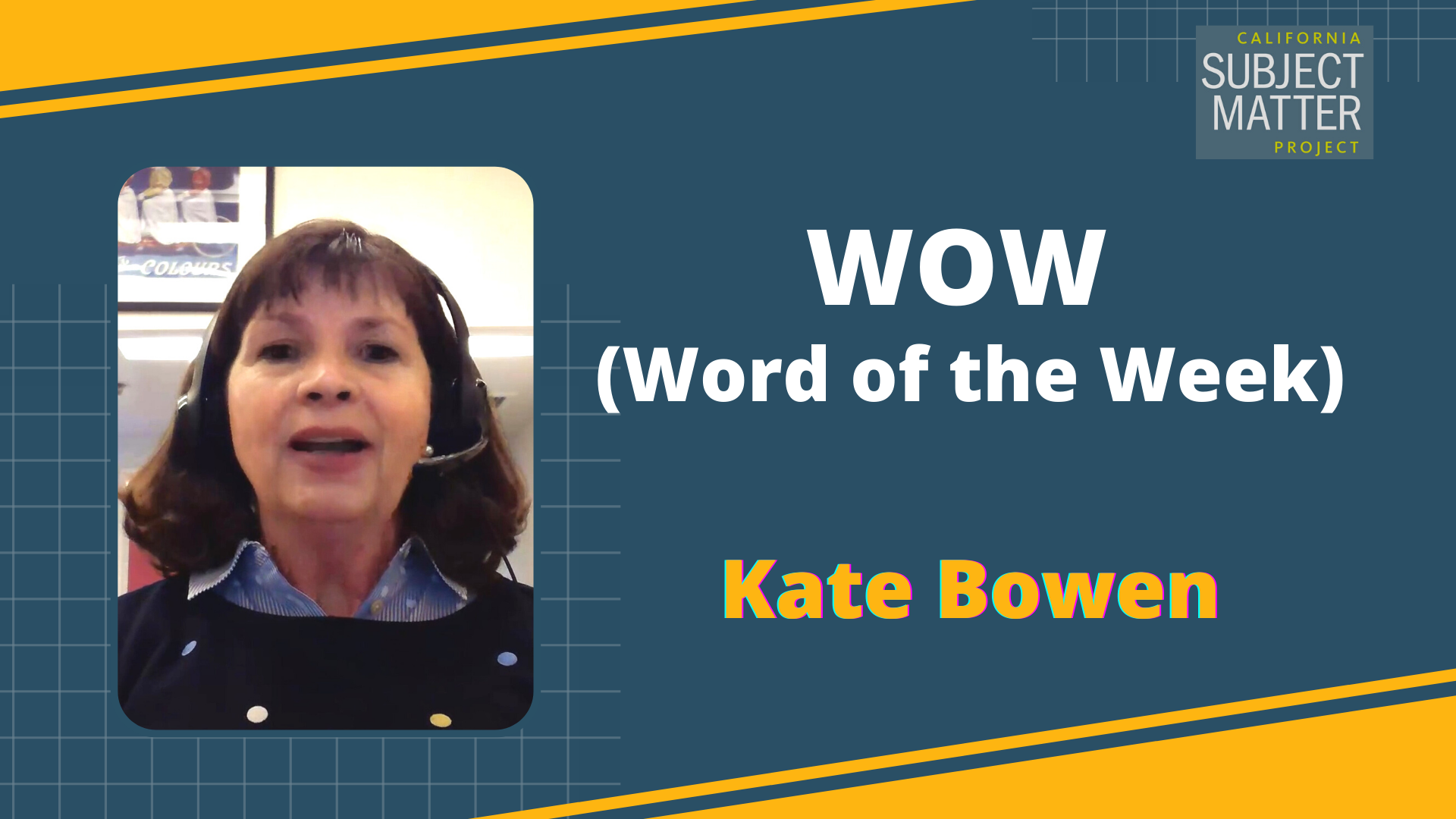Watch the Video
Presenter
Developed by Carla Evans & Jeri Thompson
National Center for the Improvement of Educational Assessment
Transcript
Welcome to Module 3: How to get there: Providing feedback that moves student learning forward. This module is part of Micro-Course 2: Learning Acceleration Using Formative Assessment Processes in the Classroom (Advanced version), created by the California Collaborative for Educational Excellence and the Center for Assessment. There is an Introduction Module to Micro-Course 2 that explains the purpose, organization, and intended use of each micro-course and should be watched first, if you have not already done so.
In preparation for digging deeper into our main topic begin by reflecting on the following prompt and questions: When you think of providing formative feedback to students what comes to mind with respect to:
– How much and what type of feedback to give?
– When to give feedback?
– What information do you give?
– How do you provide this feedback?
Please pause the video and respond to these questions either alone or with colleagues. After your reflection or discussion, resume playing the video.
This module focuses on the third aspect of Dylan Wiliam’s framework related to embedded formative assessment strategies: how to get there. This module discusses the role of the teacher in identifying students’ strengths and needs to monitor and adapt instruction in support of providing formative feedback to move learning forward. Modules 1, 2, and 4 focus on the other parts of the framework.
This module focuses on the first aspect of Dylan Wiliam’s framework related to embedded formative assessment strategies: where the learner is going. We discuss the role of the teacher, peer, and learner in the process of clarifying, sharing, and understanding learning intentions and success criteria. Subsequent modules focus on the other part of the framework.
Providing effective and usable feedback to students requires knowing their strengths and needs. Student work analysis is an effective strategy for determining the:
– Quality of student thinking and the extent to which students have learned the content,
– Misconceptions and the extent to which students have had the opportunity to learn the content, and
– Different levels of student performance.
Analyzing student work provides a window into how students construct meaning of key concepts and skills. By analyzing and interpreting student work through a clear and systematic process, teachers can improve instructional decisions for individuals and groups of students, and provide feedback that moves student learning forward, which ultimately impacts student achievement. Student work analysis is a systematic approach that allows teachers to make a shift from scoring student work to diagnosing student performance.
One way to analyze student work for formative purposes is to use the process described in the hyperlinked Student Work Analysis Protocol for Instructional Purposes. Using this process, the teacher gathers student work and does a quick sort either alone or ideally with colleagues in which papers are placed in the high, average, or low level piles. The levels are a ranking of student performance toward proficiency in relation to grade level proficiency expectations–not ranking students in relation to one another. In other words, when reviewing student work, papers in the high level are those that are closest to proficiency. Once the papers are sorted, teachers should discuss, if working with colleagues, or independently reflect, if working alone, why the papers were placed in each pile and come to consensus if there are any discrepancies. This will help to ensure that there is agreement on what constitutes proficiency. Teachers should then diagnose student strengths and needs at each level and finally, identify next instructional steps for the whole class and for students at each level. This is a great activity to do during common planning time or other types of grade-level or professional learning community meetings.
Let’s look at an example of student work that 8th grade science teachers have sorted and analyzed. The teacher reflected on the students’ progress compared to where they began the unit and recognized that two students found the topic challenging and that remediation was necessary.
Please pause the video and read the teacher’s reflection, then resume playing the video.
When examining student strengths, the teachers identified specific concepts related to the learning target and expectations for completing a lab. It is important to approach the student work analysis looking for what students are able to do and not just what they cannot do. This mindset will ensure that the differentiated instruction meets students in their progression of learning. In other words, it is the “sweet spot” where the instruction is not too difficult and not too easy.
Please pause the video and take a moment to read the students’ strengths from each of the three levels. Once you are ready, resume playing.
Next, the teachers identified the specific needs of each group.
Please pause the video and take a moment to read the students’ needs from each of the three levels. Once you are ready, resume playing.
Using this information, the teacher is able to provide students with feedback. Let’s first clarify three fundamental principles of effective and usable feedback.
First, the feedback should relate to the learning targets and success criteria that the teacher shared with students. Focusing feedback this way provides an opportunity for students to continuously internalize the expectations.
A second fundamental principle is that feedback should be focused. If students are expected to make changes based on the feedback, it needs to be specific and actionable and limited so that students can digest the information and apply the suggested strategies.
And finally, the feedback places the responsibility on the student to engage with the feedback rather than just the teacher. Effective feedback shows students how to look at their work using criteria from the assignment and it models self-assessment skills. Students need to engage with the feedback and be expected to do something with it beyond simply reading it. Feedback should be viewed as part of instruction; therefore, teachers need to include in their lesson plans time and opportunity for students to make sense of the feedback, ask questions about the feedback, and apply the comments to their work.
Please pause the video and take a moment to read the quotes on this slide. Once you are ready, resume playing.In her book, Formative Assessment: Making it Happen in the Classroom, Margaret Heritage identifies what experts say about feedback. The purpose of feedback is to help students identify the gap between where they are going and where they currently are in their learning. Consequently the formative feedback is based on criteria from specific learning targets and is descriptive of where the student’s work succeeds and falls short, along with ways to improve.
There are several aspects of formative feedback that we’ll discuss in this module:
1) Fundamental principles of effective and usable feedback,
2) Strategies to consider when providing formative feedback, and
3) Specific techniques for applying formative feedback.
Providing effective formative feedback requires being strategic. Some considerations include:
– Timing – when and how often to provide feedback,
– Content of the feedback – the focus, function, specificity, clarity, and comparisons, and
– Mode – how the feedback is presented.
Let’s look at each of these more closely.
Students need feedback in the midst of working toward meeting the learning target and while there is still time for them to act on it. The tricky part of timing is how much and how often feedback should be provided to each student. Unfortunately, there is no one right answer for making this decision as it depends on the student. However, the idea is to give enough feedback so that the student has a sense of what the feedback means and how they use it to know what to do next. The rule of thumb is to not overwhelm students with the negative and be sure to include the positive.
There are some choices that teachers can make with respect to the content of the feedback.
1) The focus of the feedback needs to be a message about something. Stating “Good work” on an assignment is only helpful if the feedback goes on to describe why the work was good. The feedback can focus on the process used by the student or on the attributes of the student work or thinking represented.
2) The function of the feedback can be either descriptive or evaluative in nature. The aim for formative feedback should be descriptive so that the student perceives the information as a way to help them move toward demonstrating mastery.
3) Feedback should be specific, but not too picky. The aim of the feedback is that it is personalized and provides students with an understanding of what they need to do next, and positions the students to be agents of their own learning.
4) The feedback should be clear to the student. Determining the clarity of the feedback can be checked by asking a student to tell in his or her own words what the feedback is saying and what they will do to respond to the feedback.
5) One other consideration in providing students with feedback is on the use of comparisons of a student’s work to qualities of good work that are exemplars of the learning targets and success criteria used in instruction. Comparisons can also be in the form of reference to the student’s own past performance. However, comparisons to other students is not helpful as it sets up competition between students and masks misunderstandings.
Feedback can be provided orally through student conferrals, in a written format, or visually through a demonstration. Whichever mode is used, feedback should start with comments about what the student did well and then shift to what needs improvement. We examine feedback through student conferrals in the following slides.
There are multiple definitions of conferring, but the key to a student conferral is a conversation with a purpose focused on uncovering student thinking in order to provide feedback that nudges student thinking forward.
Student conferrals are not the same as the teacher telling the student what to do. Instead, the conferring process provides an opportunity to interpret what students understand or misunderstand, what students are attempting in their work, what they are struggling with and why, as well as where they are in the learning process. Conferring with students elicits student thinking and makes it visible, allowing the teacher to probe a student’s reasoning. In other words, it allows the teacher to move beyond what the student did to why they did it and why it makes sense. And finally, the conferring process nudges student thinking and consequently their work forward. Starter questions for eliciting information and for probing student thinking can be found using the link provided. These questions are provided in Jen Munson’s book, In the Moment.
During a student conferral there should be a conversation between the teacher and the student, or in the case of peers providing feedback, it should be a conversation between the student and a peer. While conferring provides an opportunity to give and receive feedback, there are other benefits that support the formative assessment process including:
– Developing relationships with students
– Differentiating instruction
– Promoting equity and inclusion
– Supporting norms for discourse and disciplinary practices
– Developing deep conceptual understandings, and
– Supporting metacognition.
There are two misconceptions about formative feedback that we want to address:
1) Returning graded work to students is formative feedback, and
2) Detailed correction of every flaw and error is effective feedback.
While in a general sense a grade is feedback, it is not formative feedback. A grade provides no information about what or how to improve. Also, when a student sees a grade on a paper, research shows that learning stops, at least for a while.
Instead, effective feedback is descriptive. Effective feedback describes the strengths and needs of the work within the student’s zone of proximal development and then suggests strategies that the student could use towards demonstrating mastery or proficiency of the concept and skills. Effective feedback does not identify every flaw and error, overwhelming students so that they don’t know where to begin. Effective feedback must be provided with enough time for the student to improve before a final grade is assigned.
Module 4 in Micro-Course 2 continues to develop the formative assessment processes described in Dylan Wiliam’s framework. This slide provides an advanced organizer so that you know which module you can go to in order to find out more about certain topics including involving students and their peers in the formative assessment process.
We believe that it is essential to take a few minutes to reflect upon what you just heard, organize it in your own mind, and to apply it to your classroom assessment practice. Pause to reflect and respond to the following:
1) Explain the fundamental principles of effective and usable formative feedback.
2) Based on what we discussed in this module, what are some new strategies that you can employ to provide effective formative feedback to students?
3) Consider the feedback that you provide to students in your class and explain how students have opportunities to use the feedback.
4) Apply the Student Work Analysis Protocol using student work from your class. With your colleagues, diagnose students’ strengths and needs, and discuss instructional next steps. What did you learn from this process that allows you to provide actionable feedback to your students?
5) What is one key takeaway and one lingering question you have after listening to this module?
Accompanying Materials & Resources
- Click to download the slides for this presentation.
- Click to download the slides presentation handouts (PDF)
- Click to download the Eliciting Probing Moves from Munson 2018 (PDF)
- Click to download the Student Work Analysis Protocol (DOCX)



